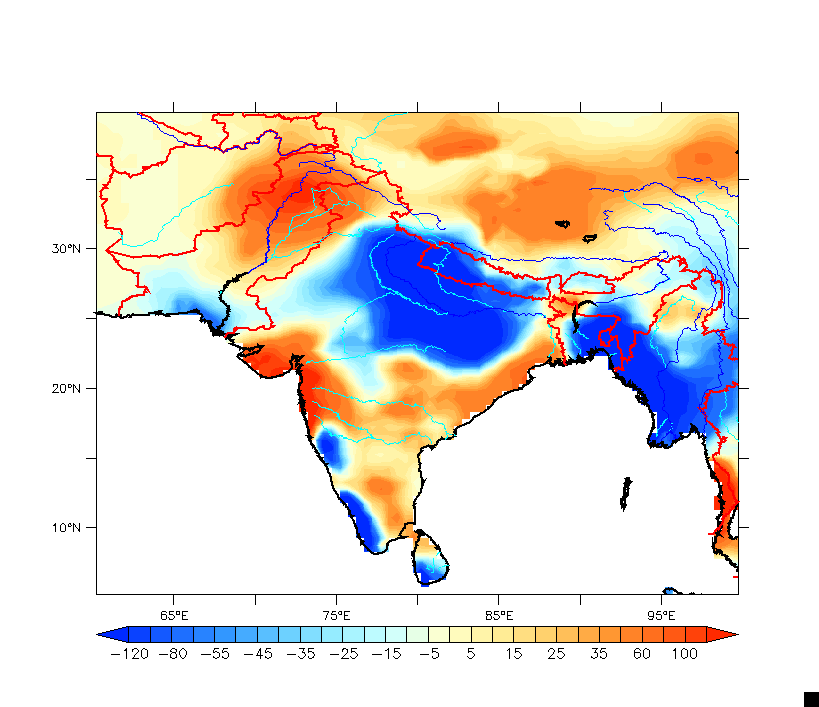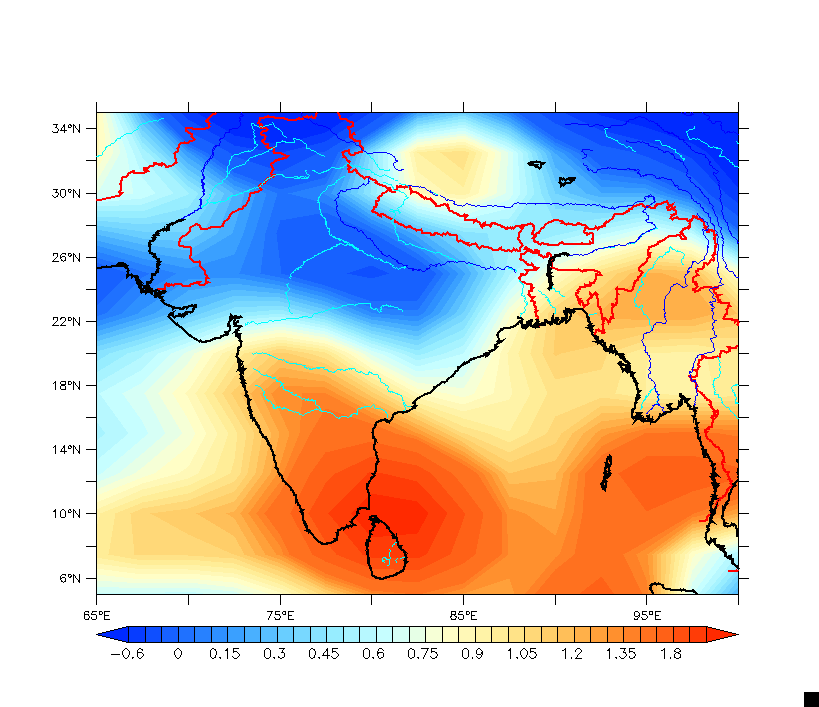Objectives
My recent research points out a significant decreasing trend in the summer monsoon rainfall over the central Indian subcontinent during the past century. The study suggest that the decrease in the Mixed Layer Heat Content Indian Ocean is playing an important role in weakening the monsoon circulation and the rainfall.
Reduced rainfall over South Asia

Observed data dating from the 1870s are available for the summer monsoon rainfall, from the Indian Meteorological Department and other sources. Using the data from 1958-2015, we found that the rainfall is decreasing over central South Asia – from south of Pakistan through central India to Bangladesh. The decrease is highly significant over central India where agriculture is still mostly rain-fed, with a reduction of up to 10-20% in the mean rainfall.
Indian Ocean warming results in a weakened monsoon driver
So why is the monsoon weakening, despite the suggested global increase of the monsoon drivers? The study finds that, contradictory to what earlier studies have noted, the land-sea thermal contrast over the South Asian domain has in fact reduced in the past decades. This reduction in land-sea temperature is primarily contributed by a strong warming in the Indian Ocean. The surface warming in the Indian Ocean especially that in the western regions have reached values of up to 1.2°C during the past century, much larger than the warming trends in the other tropical oceans. The decrease in the land-sea thermal contrast is also visible in the upper atmosphere, as the warming trends in the ocean surface is transferred to the atmosphere above through convective processes. Apart from the ocean warming, a part of the decrease in land-sea temperature difference is also due to suppressed warming over the Indian land mass, possibly due to increased aerosols or reasons which are still uncertain.

Weakened monsoon circulation
The warming Indian Ocean also plays a role in weakening the monsoon circulation. Increased warming in the ocean enhances the large-scale upward motion of warm moist air over the equatorial ocean. This enhanced upward motion over the ocean is compensated by subsidence of dry air over the subcontinent, inhibiting convection and rainfall over the Indian landmass. This means that a warming Indian Ocean has resulted in surplus rains over the ocean at the cost of the monsoon rains over land, simultaneously drying the Indian subcontinent.
Future
Climate models suggest that Indian Ocean will continue to warm under increasing greenhouse gases. Will the monsoon decrease further? Questions remain. The critical role of the warm Indian Ocean deserves special attention for its decisive effect on the food security of a large fraction of the world’s population, and its role in inducing a drought over the Indian subcontinent.